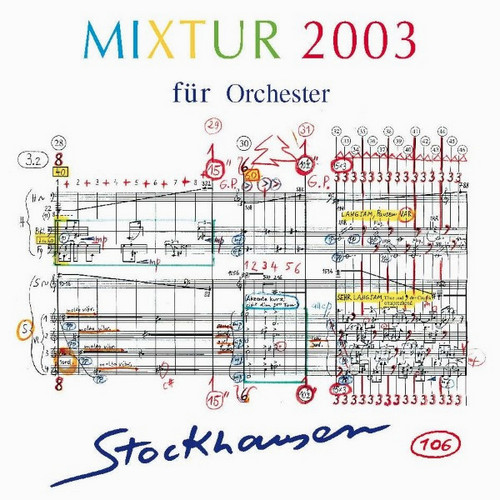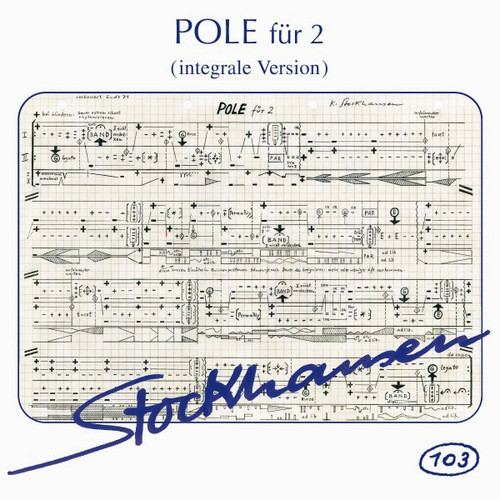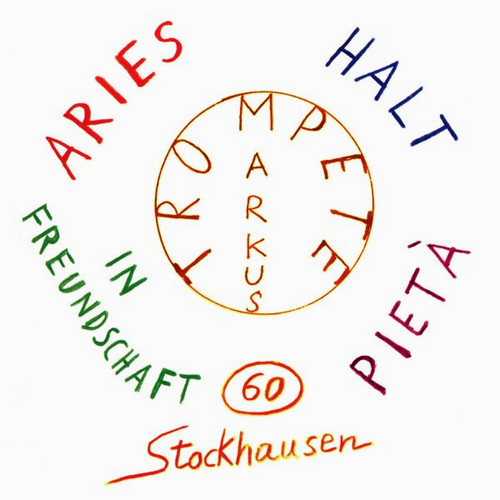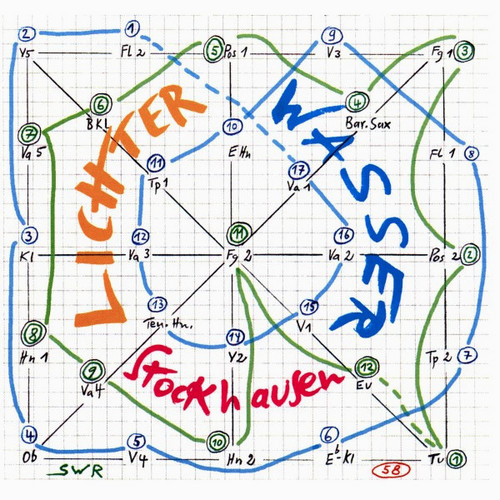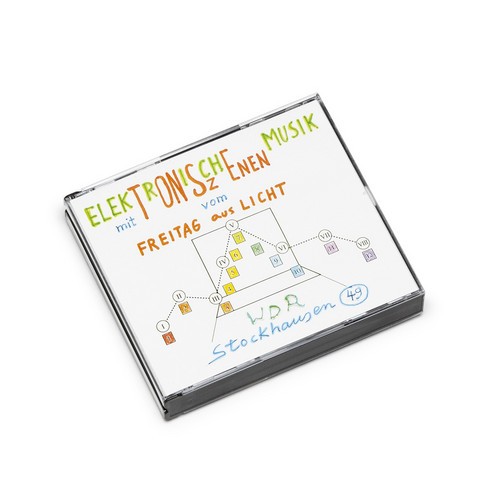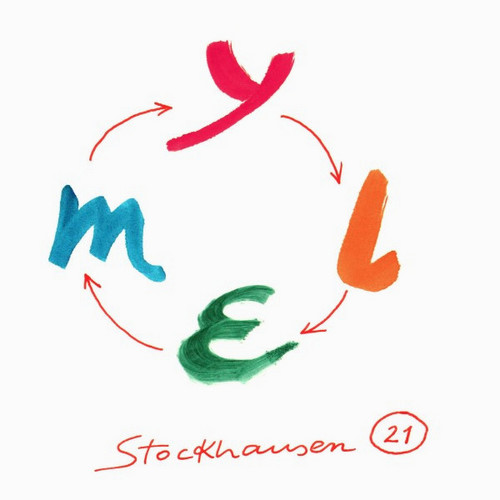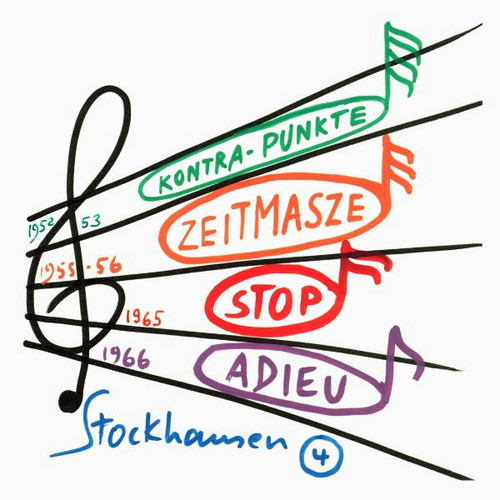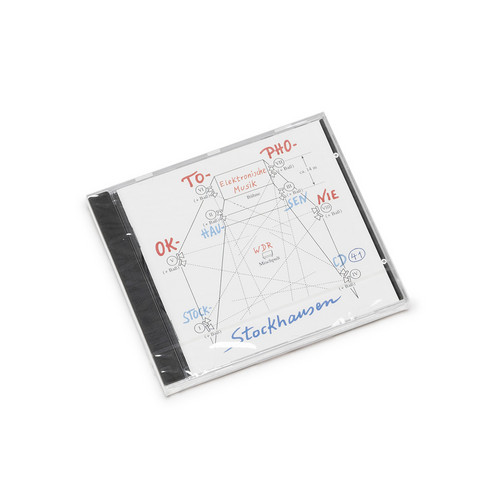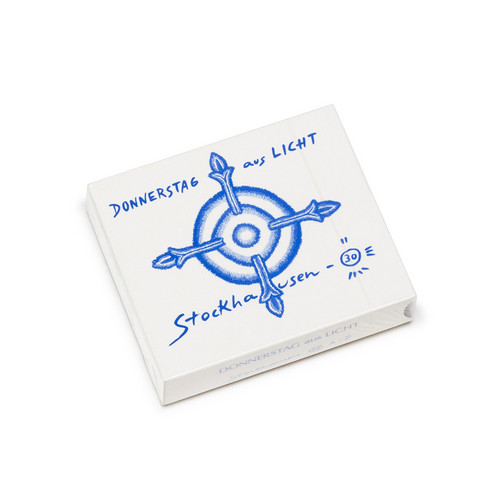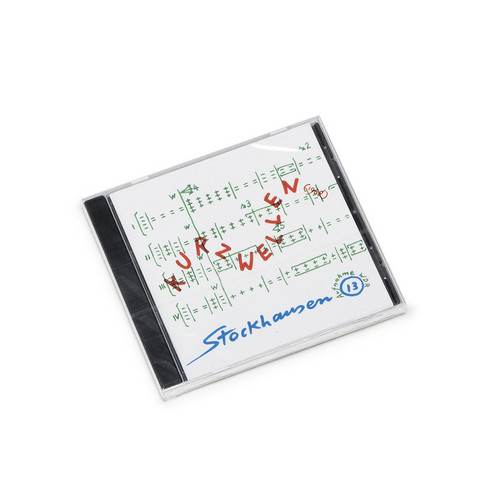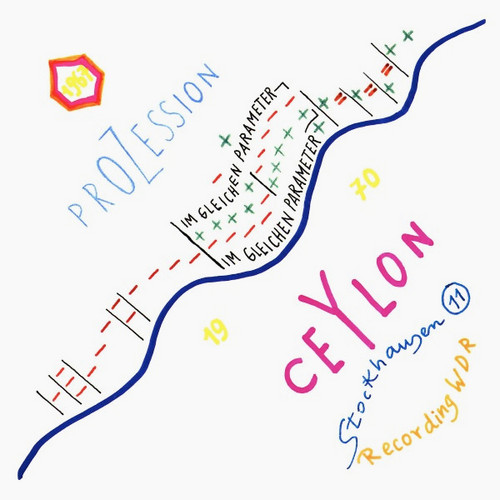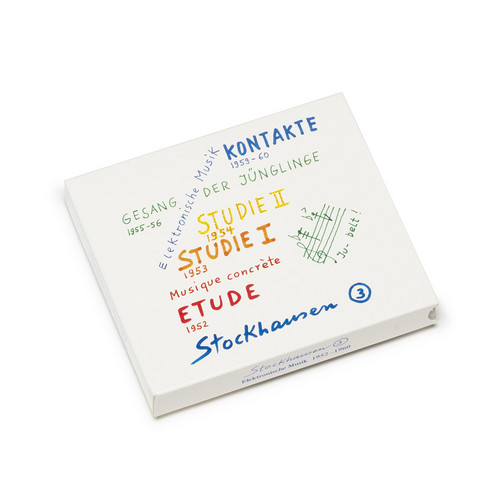★Stockhausen-Verlag
Spiral - Pole
Karlheinz Stockhausen – Spiral was composed in 1968 while Stockhausen was living in Connecticut (United States). It was developed through his association with a guitarist student, Michael Lorimer, and originally dedicated to him (tho never performed by him). Spiral had it's greatest success when it was premiered by the oboist Heinz Holliger (and subsequently performed more than 1300 times!) at the Osaka 1970 World's Fair Expo in Stockhausen's own performance pavilion, a speaker-lined spheric…
Mixtur 2003 Vorwärtsversion
*2022 Stock.* This recording of an updated version of Mixtur (for 5 ring-modulated orchestra groups, orig. 1964/67) features the Deutsche-Symphonie-Orchester Berlin, conducted by Wolfgang Lischke. In contrast to the original, graphic notation-based version of Mixtur (on The Stockhausen Edition no. 8), all of the orchestra parts for the updated 2003 version are completely notated.- Stockhausenspace.blogspot.com
Pole Für 2 (Integrale Version)
*2022 Stock.* 'The Stockhausen Edition no. 103 contains the first complete recording of Pole (Poles, 1969-70) for 2 soloists with shortwave radio (and small instruments). Vocalists Natascha Nikeprelevic and Michael Vetter are featured here. The score for Pole includes directions for spatial placement of sound sources, which were realized through panning and digital reverb. An earlier recording of this piece with Péter Eötvös & Harald Bojé can be found on The Stockhausen Edition no. 15.' - Stockh…
Orvonton
*2022 Stock.* Orvonton (15th Hour from Klang, 2007) is for Baritone and Electronic Music. The electronic music element is derived from 3 extracted layers from Cosmic Pulses (The Stockhausen Edition no. 91), specifically Layers 4-6. This CD features the baritone vocal of Jonathan de la Paz Zaens. As a bonus, the electronic music is also presented without the soloist part for rehearsal.- Stockhausenspace.blogspot.com
Havona
*2022 Stock.* Havona (14th Hour from Klang, 2007) is for Bass and Electronic Music. The electronic music element is derived from 3 extracted layers from Cosmic Pulses (The Stockhausen Edition no. 91), specifically Layers 1-3. This CD features the bass vocal of Nicholas Isherwood and as a bonus, the electronic music is also presented without the soloist part for rehearsal. - Stockhausenspace.blogspot.com
ARIES for trumpet and electronic music
*2022 Stock.* This disc spotlights the trumpet and flugelhorn skills of Marcus Stockhausen (also a featured performer on The Stockhausen Edition no. 33, 35, and 43). These four tracks were originally released by EMI Classics in 1998. - Stockhausenspace.blogspot.com
Lichter - Wasser
*2022 Stock.* Lichter - Wasser (Light-Waters) is the 1st Scene of Stockhausen's dramatic music work Sonntag Aus Licht (Sunday from Light), which was the last-composed entry of his 7-part, 29-hour opera cycle Licht (Light). Licht is a work for acoustic and electronic operatic forces, divided into the 7 days of the week (one opera for each day). This opera cycle revolves around 3 archetype characters, Michael, Eve, and Lucifer, and over the 29 hours each of these characters are introduced, come in…
Elektronische Musik Mit Tonszenen Vom Freitag Aus Licht
*2022 Stock.* Elektronische Musik Mit Tonszenen Vom Freitag Aus Licht, this 2 CD set contains the dark ambient electronic music (Weltraum, or "Outer Space") from the opera Freitag Aus Licht (Friday from Light), combined/mixed with the Paare vom Freitag (Couples of Friday) "Sound Scenes" (heard as isolated duets on Paare vom Freitag, The Stockhausen Edition no. 48). In other words, this is the "tape" parts of the opera without the live performers. The electronic music is also used as the ambient …
YLEM
*2022 Stock.* The Stockhausen Edition 21st CD features 2 performances of the open-form work YLEM, which musically portrays the birth and death of the universe through the progressive motion of handheld instruments through a performance space (or in this case, the stereo field). The word "ylem" ("eye - lum") comes from a 1940's science term for "matter", specifically the sub-atomic plasma initially created at the Big Bang which continues to spread outwards forming the boundaries of the universe. …
Kontra-Punkte / Zeitmaße / Stop / Adieu
*2022 Stock.* The best, most efficient way to hear Stockhausen's works is through his official record label and publishing house. The Stockhausen Edition CDs are meticulously assembled with often voluminous booklets in English and German, filled with sketches and other documentary artifacts. Almost all of the recordings originally released on Deutsche Grammophon, Wergo, Nonesuch and other labels were reacquired by Stockhausen, and then remastered and repackaged under the Stockhausen Edition cata…
Synthi-Fou / Dienstags-Abschied
*2022 Stock.* Karlheinz Stockhausen – “Synthi-Fou / Dienstags-Abschied ” "A double –CD like this one falls right into that crystal clarity, giving yet more insight into how his art is achieved, piece by piece, structurally – but as it is with human beings or a flower or an Earth sun rise, the result is much more and something else altogether than the sum of all the parts… and somewhere in that realm lies the real mystery; that elusive, vibrant core of beauty and truth which can’t be accounted fo…
Oktophonie
*2022 Stock.* Karlheinz Stockhausen – “Oktophonie ” Realized at the Studio für Elektronische Musik, WDR, August 23 - November 30, 1990 & Aug. 5-30, 1991. " (...) Stockhausen also points out that the production and spatialization are described in the separate OCTOPHONY score. This score is indeed a very meticulous and detailed one, indispensable for aficionados who will want to enter the inner workings of the OCTOPHONY structure. It is an extreme score in this aspect, in the minute details of its…
Donnerstag Aus Licht
Karlheinz Stockhausen – “Donnerstag aus Licht” (“Thursday from Light”); opera in three acts, a greeting and a farewell for 15 musical interpreters (4 solo voices, 8 instrumental soloists, 3 solo dancers), chorus, orchestra and magnetic tapes (1978 – 1980) " It arises in a silvery, calm motion of wind instruments – obviously preparing us for something of importance and vast durations. It is “Donnerstag-Gruss” (“Thursday Greeting”); the start of “Donnerstag aus Licht” (“Thursday from Light”); the …
Mantra
*2022 Stock.* Karlheinz Stockhausen – “Mantra” was composed in 1970 and premiered in autumn of the same year at the Donaueschingen Festival. The work is scored for two ring-modulated pianos; each player is also equipped with a chromatic set of crotales (antique cymbals) and a wood block, and one player is equipped with a short-wave radio producing morse code or a magnetic tape recording of morse code. "The real basis for “Mantra” is a thirteen-note motif; formula, allotting each note specific ch…
Kurzwellen
*2022 Stock.* Karlheinz Stockhausen – “Kurzwellen” for six players (1968). Participants: Aloys Kontarsky (piano & short-wave radio), Harald Bojé (electronium & short-wave radio), Alfred Alings & Rolf Gehlhaar (tam-tam & short-wave radio), Johannes G. Fritsch (electric viola & short-wave radio), Karlheinz Stockhausen (filters & potentiometers). Kurzwellen is one of a series of works dating from the 1960s which Stockhausen designated as "process" compositions. These works in effect separate the "f…
Prozession / Ceylon
Karlheinz Stockhausen – “Prozession” (1967) / “Ceylon” (1970) Prozession is one of a series of works dating from the 1960s which Stockhausen designated as "process" compositions. These works in effect separate the "form" from the "content" by presenting the performers with a series of transformation signs which are to be applied to material that may vary considerably from one performance to the next "Prozession is an ensemble piece that Stockhausen wrote for his ensemble of the time, but it is…
Elektronische Musik 1952-1960
In short, some of the most breathtaking, intrepidly advanced electronic music ever recorded. A truly precious survey of a lone, pioneering voice in electronic music. Cardboard slipcase housing a CD jewel case and a 184-page booklet in German and English. Karlheinz Stockhausen – Electronic Music 1952 – 1960: “Etude” (1952) / “Studie I” (1953) / “Studie II (1954) / “Gesang der Jünglinge” (1955-56) / “Kontakte” (1959-60). "Nowadays anybody with a computer and some relatively cheap software can mani…

